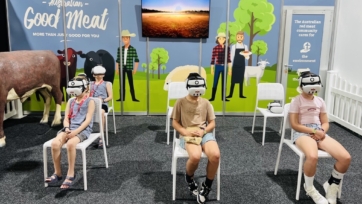Inspiring teachers with your resources
Creating inspiring resources that teachers and students will love
It might seem simple to create classroom resources to get your content into schools. A couple of worksheets, maybe a colouring page, some activity sheets and you’re good to go, right? Well not quite. Here’s some things to consider so you can be sure to create the types of classroom resources that teachers will seek and students will love:
1. Curriculum links. This is the number one thing teachers are looking for. It means they can trust that;
- the resource will fit in with their planning,
- the resource will contribute towards their students’ learning,
- they don’t have to work any of this out, essentially saving them time.
Consider where your content is best placed within the Australian Curriculum, unless of course, you are catering to teachers in a specific state, and which age groups you are targeting, to ensure your content is presented and engaged with in the most appropriate way. We can help support you with this as the Curriculum can be challenging to navigate without the appropriate teacher experience..
2. Flexibility. To understand how teachers use resources we also need to understand how modern classrooms operate. Classroom educators have to juggle the learning needs of 25 students (minimum) every day, as well as ensure they are teaching curriculum outcomes, life skills and social skills, collaborating with parents and other staff and making time to plan for future learning, mark work and assess progress. Therefore, teachers need resources that are flexible enough to be incorporated into a number of contexts as well as be presented in a way that suits the learning needs of their students. The bottom line here is, the more prescriptive a lesson plan is, the less likely teachers are to use it. Give teachers your content and guard rails, then allow them the space to use that in the best way for their class.
3. Maximise engagement. We must also consider the secondary audience our resources are going to, students, and keep in mind the widely accepted understanding that people learn better when they are interested in what they’re doing. Simply put, if you aren’t inspired by your resources, chances are that students won’t be either. Take an opportunity to engage with your or your friends’ children, find out what they’re into and what challenges them, and create a resource based on these interests. Engagement isn’t just about being exciting though, engaging learning always presents a challenge to stretch students’ knowledge and understanding and push them out of their comfort zone. Whether it’s learning a new technology or tool, developing a skill in a different context, or applying learning within the wider community, these challenges present great opportunities for learning! This is also inline with teaching practices in the classroom today.
Remember that teachers know their students best and ultimately decide whether classroom resources are worth their time. Pack your resources with inspiration, challenge and a multi-faceted understanding of teaching and learning to gain not only respect from our teachers, but also the best opportunity to get your content into the classroom.
Next Steps?
Need help developing resources that inspire teachers and students? Contact Kimberlin Education and let us develop resources made for teachers, by teachers.




